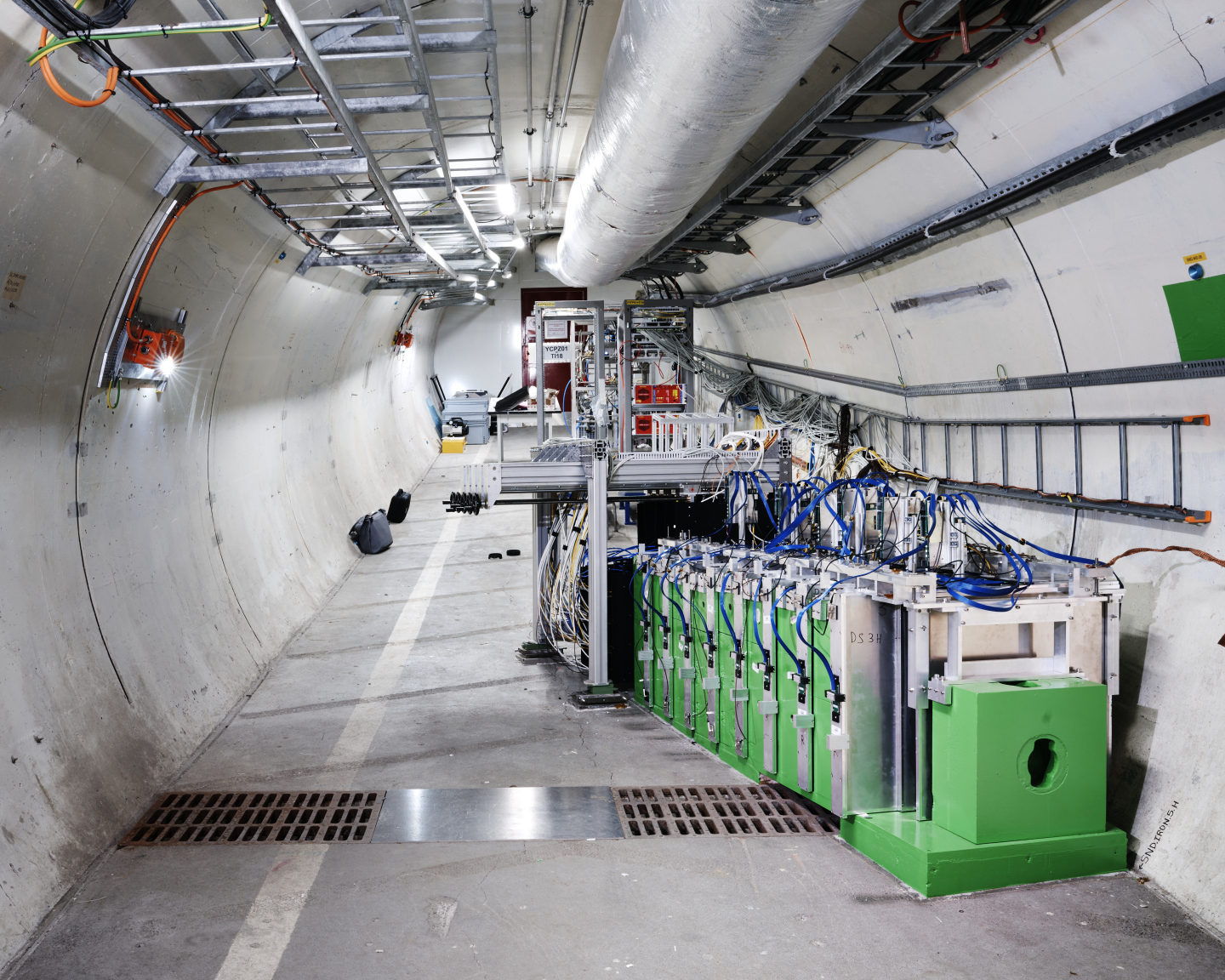Publication of first observation of collider neutrinos by SND@LHC
The observation paves the way for exploring new physics scenarios. Martina Ferrillo, a PhD student in the group of Prof. Nico Serra is one of the main proponents of the analysis - congratulations to her for this impressive result!

A flagship result for the SND experiment was just submitted to Phys. Rev. Lett., available as a pre-print here, which is the observation of collider neutrinos at the experiment. This milestone heralds opening of a new chapter for the exploitation of collider neutrinos.
The SND@LHC is a recently approved and running experiment at the Large Hadron Collider (LHC) performing neutrino physics and Feebly Interacting particles searches. It collects man-made neutrinos in the uncharted TeV energy scale from $pp$ collision at the ATLAS interaction point. The detector is located in the TI18 tunnel, $\sim 480\,$m away from the collision point IP1 (Fig.~\ref{fig:snd}), and covers the forward pseudo-rapidity region $7.2<\eta<8.4$, where neutrinos are mostly produced from charmed hadrons. Measuring neutrinos at these unprecedented energies and rapidities provides crucial constraints on the production of heavy flavours, and in turn to the gluon pdf at very small $x$ values ($x<10^{-6}$), currently limited by large theoretical uncertainties. Improved constraints on these phenomena are an essential benchmark for the realisation of Future Colliders and the understanding of astrophysical neutrino sources. The UZH group is heavily involved in all aspects of the SND experiment from the detector construction and operations to the analysis of the initial dataset.
The recent paper describes an observation of eight neutrino candidates with an expected background of less than 0.1, yielding a statistical significance of over seven standard deviations. Martina Ferrillo, a Ph.D. student in the group is one of the main proponents of the analysis - congratulations to her for this impressive result!